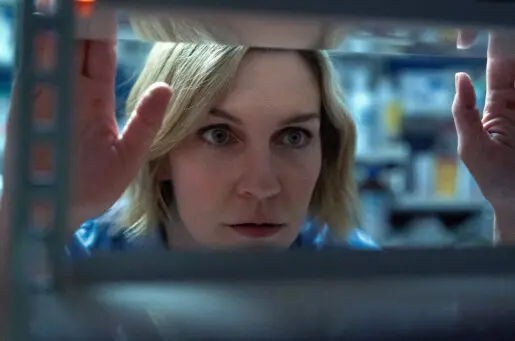Bioethics Forum Essay
Of Kinks, Crimes, and Kinds: The Paraphilias Proposal for the DSM-5
When is a kinky interest really sick?
That’s the central question the Paraphilias Sub-Work Group of the American Psychiatric Association has had to face as they’ve developed proposed revisions for the DSM-5. Pity those given the task of trying to figure out how, when, and why to medicalize or de-medicalize everything from asexuality to zoophilia (the latter being the sexual interest known to less progressive types as bestiality).
Looming over the whole task is the ugly history of the pathologizing of homosexuality. As I teach my students every year, it took until 1973 for the American Psychiatric Association to stop officially categorizing all forms of homosexuality as mental disorders. And that official demedicalization happened not because a happy and spontaneous consensus emerged that the science supported the change, but because gay psychiatrists understandably had had enough.
Nowadays, you can find self-appointed representatives of every sexual interest who will try to align their history with homosexuality, because, like the gay psychiatrists of the early 1970s, they want out of the DSM. The bondage folks, the zoophiles – even the pedophiles want out. At least the vocal ones do. They’ll tell you that, like gay men and lesbians, they never should have been in the book in the first place.
I would have been watching the progress of the Paraphilias Sub-Work Group regardless; as an historian of sexuality, I’m professionally fascinated to see where it will all go. But as it turns out, I’ve had something of a ringside seat, because my friend Ray Blanchard has been serving as the chair of the sub-work group.
Ray and I met over a paraphilia a few years ago. (It wasn’t as exciting as that may sound. I was writing a history about a controversy over autogynephilia, a paraphilia Ray articulated, investigated, and named.) In the last year, I’ve been witnessing Ray’s struggle over the challenge of coming up with a scientifically sound, clinically helpful revision of the DSM-4’s mess.
I’ve only been able to watch Ray’s generalized struggle, and not to hear many of the details. The work was embargoed until a few days ago, when it was thrown open to the public for comment. It’s been a little like waiting for a friend’s baby to be born, and I find myself now counting its fingers and toes to see what we’ve got. And maybe it’s just because I’ve been waiting a long time for this baby and one of its four parents is my friend, but I think what we’ve got here is pretty viable.
The central shift strikes me as really smart: the sub-work group has proposed distinguishing between paraphilias and paraphilic disorders. Whereas the DSM-4 made all paraphilias sick, the DSM-5 proposal seeks to recognize a difference between the harmless and the harmful.
Under the revision, the foot fetishist who keeps getting arrested because he steals shoes, who fondles the feet of unconsenting women strangers, and who can’t hold a job because he’s too busy obsessing about his next sexual opportunity – he’s got a paraphilic disorder. The foot fetishist who is happy, comfortable, and functions fine – he just has a paraphilia.
What exactly is a paraphilia? Ray has defined it as “any intense and persistent sexual interest other than sexual interest in genital stimulation or preparatory fondling with phenotypically normal, consenting adult human partners.” I realize that definition is probably a turn-off, but that’s scientific language for you. Basically what this means is that a paraphilia is a general term for sexual kinks.
The move in the DSM proposal is a subtle way of saying sexual kinks are basically okay – so okay, the sub-work group doesn’t actually bother to define paraphilia. But a paraphilic disorder is defined: that’s when an atypical sexual interest causes distress or impairment to the individual or harm to others.
I asked Ray about the logic behind this interesting move. He explained to me, “We tried to go as far as we could in depathologizing mild and harmless paraphilias, while recognizing that severe paraphilias that distress or impair people or cause them to do harm to others are validly regarded as disorders.”
Some critics will say that the sub- work group amounts to a ship of fools because they are trying to draw lines that don’t really exist in nature. Human sexuality is so complicated, human sexual history so irregular, how can you hope to say what is merely kinky and what is really sick? How can you say whether the heartsick foot fetishist is mentally disordered?
I put this to Ray, and I found his answer reasonably pragmatic: “The Paraphilias Sub-Work Group recognized from the outset that there are many shades of grey between typical sexual behavior, paraphilias, and paraphilic disorders. The important thing for us was distinguishing between benign paraphilias versus paraphilic disorders that cause real anguish to the individual or predispose the individual to violate the rights of other people or harm them in serious ways.”
There are still critics who think that the DSM is no place to deal with sexual variety. For example, the physician and sexologist Charles Moser, who has had a long-time interest in S&M, has taken this position – that the so-called paraphilias, no matter how harmful to self or others, have no place in the DSM. Moser understands that a pedophilic act is a crime, but he argues (with Peggy Kleinplatz) “that the removal of pedophilia from the DSM would focus attention on the criminal aspect of these acts, and not allow the perpetrators to claim mental illness as a defense or use it to mitigate responsibility for their crimes. Individuals convicted of these crimes should be punished as provided by the laws in the jurisdiction in which the crime occurred.”
The problem I see with Moser’s approach is that, in the guise of being progressive, it is actually pretty draconian. Moser doesn’t seem to understand that there are men who might be thought of as “responsible pedophiles” – men with pedophilic interests who stop themselves from acting on those interests. Under Moser’s approach, there seems to be no avenue for a “responsible pedophile” to legitimately seek medical attention in his attempts to avoid committing a crime. If you completely demedicalize all paraphilias, there seems to be no straightforward way for a clinician to reasonably seek, for example, to use hormones to chemically flatten the libido of the “responsible pedophile” so that he will not feel much urge to act on his interests.
Moreover, I don’t get why, under Moser’s logic, sexuality has some kind of almost magical power to it, such that it can make acts that most people would see as really harmful merely hot. Imagine, for example, a man likes to beat his wife black-and-blue. She says she consents to the beatings. As I understand Moser, if sexual stimulation results, then we should simply congratulate the couple on their fabulous relationship and walk away.
And what about sadistic rapists who abduct, torture, and even kill strangers? Are we really supposed to believe such people are criminals but they aren’t mentally ill? I’m not saying these criminals should be absolved of punishment, but surely such people are seriously sick by anyone’s reasonable definition. To deny that – whether it is done in the service of sexual liberation or in the hopes of appropriately punishing criminals – is just making medicine a slave to social politics.
Critics of the DSM’s inclusion of any paraphilic disorders sometimes claim that the DSM adds stigma to their identities. This may be true in some circumstances, and as a long-time critic of sexology’s effects on sexual minorities, I’m sympathetic to the concern. But I also admit I find it hard to believe that the little old lady on the street corner who is freaked out by the leather-decked guy walking by with his dog-collared-and-leashed human sex slave is freaked out because she checked the DSM. Although it would be good if the DSM writers did not intentionally add stigma to anyone’s life – and I think the proposed paraphilias revision actively seeks to avoid unnecessary stigma of kinks – it is not really their job to make everyone feel proud of their identities.
Historically speaking, many identities have indeed gone the way of homosexuality: from being understood as a sin, to a crime, to a pathology, to a proud identity. But that doesn’t mean all forms of sexuality should go all that way, especially not forms that involve sex with a person who cannot consent (as a child cannot) or has not consented (as a rape victim has not). For some sexual varieties, rather than drawing a parallel to the history of homosexuality, it might make more sense to draw a parallel to something like the history of alcoholism.
Drunkenness was once understood simply to be a sin. Then it became a crime. Then a medical problem. Many alcoholics now see their alcoholism as the basis of an essentialized identity – they call themselves alcoholics even when they have not drunk alcohol for 30 years.
But no sensible person would see alcoholism as simply a matter of political identity, one whose pull to indulge should be proudly pursued, complete with celebratory parades. A drinking problem can, after all, lead to real harm to oneself and to others. The very reason recovering alcoholics embrace the identity is because they recognize alcoholism as a serious disorder.
It might make a lot of sense to think of sexual interests like pedophilia as being akin to alcoholism. That is not to say we should put the DSM-5 to bed and forever cease thinking about how best to categorize, manage, and treat sexual varieties in medicine and in culture. I think, unlike some past groups, the DSM-5 sub-work group has enough humility to recognize their work will someday need to be revised again. But it is to say I think the DSM-5 proposal for distinguishing paraphilias from paraphilic disorders offers what medicine is supposed to offer: the prospect of maximizing help while minimizing harm.












